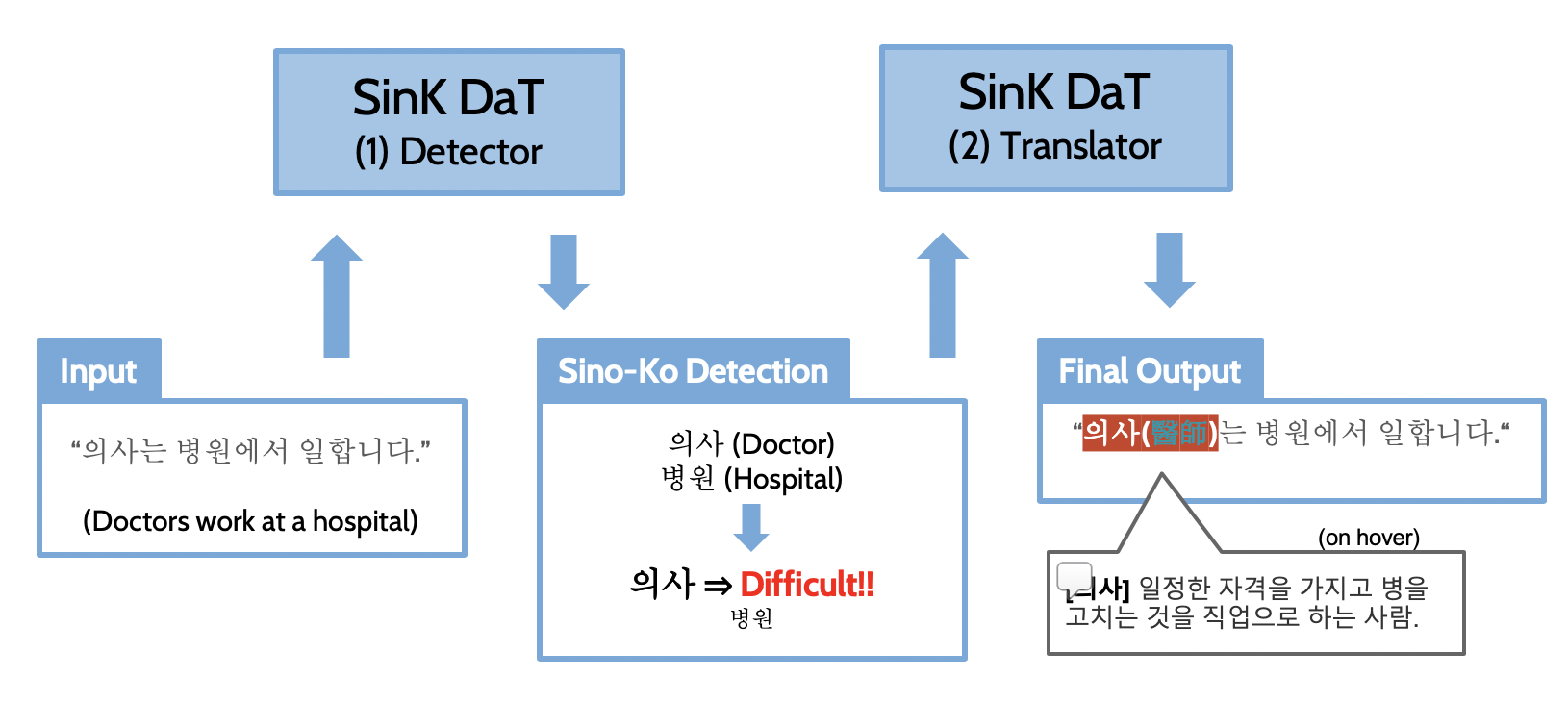SinK-DaT
Language model to help the young Korean generation in comprehending difficult corpora

Sino-Korean (Sin-Ko) words are Hanja-based words incorporated to the Korean language. Such words are widely used in many Korean corpora for their ability to contain complex meanings in just few letters. Despite its wide usage, especially among the older generation, Hanja is seldom taught in the modern curriculum, resulting in an unbridgeable linguistic gap between the younger and the older generations. Understanding each other’s language is vital in reducing the generational and domain language gap. Thus, we constructed a model that detects and defines difficult Sin-Ko words to aid reading comprehension and to expedite language acquisition for the younger generation.
We introduce a new Korean language model called SinK-DaT, the Sino-Korean(Sin-Ko) Detector and Translator. SinK-DaT providesthe correct meaning and Chinese character representations of the ”difficult” Sin-Ko wordbased on context from a given Korean text. Experiments on old Korean news articles show that the model can not only detect most Sin-Ko words, but also distinguish difficult ones among the detected Sin-Ko words and thus, supply the most suitable definitions to the users. As a result, Sink-DaT helps the young Korean generation in comprehending difficult corpora.